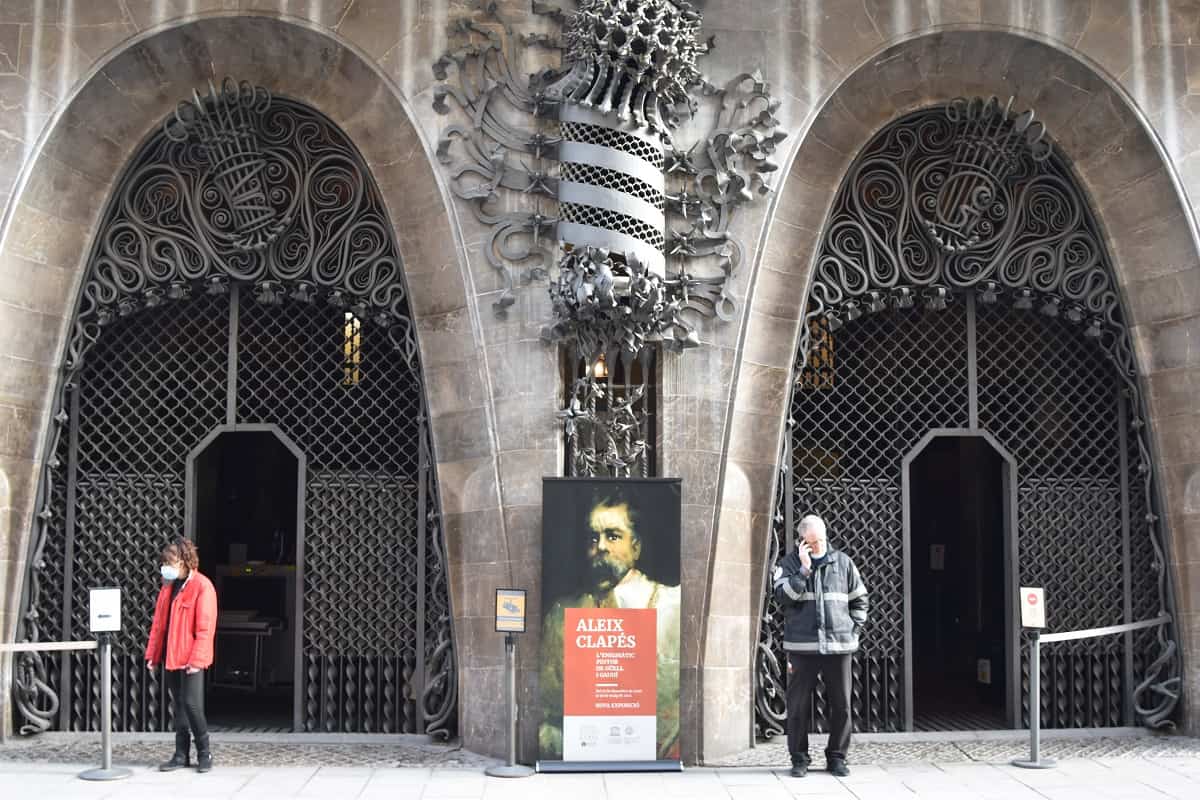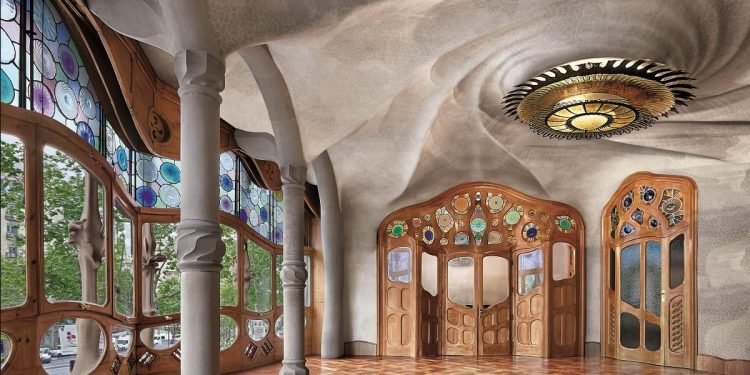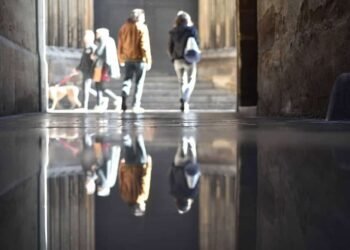Most people visiting Barcelona will have heard of the major works of Antoni Gaudí, such as the Sagrada Família and Casa Milà. Other equally interesting architecture by Gaudí lies tucked away, sometimes in quiet residential neighborhoods. In this article we’ll cover the ten major projects of the Catalan architect and their unique stories.
La Sagrada Família

The Basílica i Temple Expiatori de la Sagrada Família is a Roman Catholic basilica designed by Antoni Gaudí (1852–1926) and probably the most emblematic of all Barcelona’s attractions. Construction of La Sagrada Família began in 1882 and Gaudí began working on the project in 1883. He combined Gothic and curvilinear Art Nouveau forms and the basilica became his life’s work. Still incomplete, La Sagrada Família, now a UNESCO World Heritage Site, is projected to be finished in 2026, the 100th anniversary of Gaudí’s death.
Casa Vicens

Casa Vicens is Gaudí’s first building in Barcelona. It is located in the Gràcia neighborhood on Carrer de les Carolines, 24. Casa Vicens was built as a summer home between 1883 and 1885; designed by the 31-year-old Gaudí for Manel Vicens i Montaner.
Güell Pavilions

The Pavellons of Finca Güell in Pedralbes marked Gaudí’s first commission from the man who would become his main patron. Gaudí worked on the project from 1884 to 1887, re-landscaping the garden and building the two gatehouses, which were intended to be the caretaker’s house and the stables.
Palau Güell

Palau Güell is a mansion designed by the architect Antoni Gaudí for the industrial tycoon Eusebi Güell and built between 1886 and 1888. The Art Nouveau inspired palace was the home of the Güell i López family until they moved to Park Güell.
Teresian College

Between 1888 and 1890, Gaudí led the construction of the school and headquarters of the religious order of the Teresians in the village of Sant Gervasi de Casseroles, now a neighborhood of Barcelona. The building remains a private school.
Casa Calvet

Some consider Casa Calvet (1899) Gaudí’ most conservative work but it also contains modernista elements. It is situated in Eixample and the ground floor now houses a restaurant.
Torre Bellesguard

Bellesguard, also known as Casa Figueres, is a modernist manor house designed by Gaudí and constructed between 1900 and 1909. It is located in the Sarrià-Sant Gervasi district.
Park Güell

Originally intended as a housing development project for the elite of Barcelona, Park Güell instead became a park. It was named a UNESCO World Heritage Site in 1984 and now stands among the top tourist attractions in the city.
Casa Milà

Casa Milà, also known as La Pedrera (the quarry) was designed by Gaudí and built from 1906–1912. The building was commissioned by the industrialist Pere Milà and his wife Roser Segimon.
Casa Batlló

Gaudí’s Casa Batlló was created between 1904 and 1906. The building was remodeled by Gaudí for the textile industrialist Josep Batlló from a previously built house. Casa Batlló recently won the award for the Best Visit of 2022, and has also been nominated for the Best Visit in Europe in 2023 by ICOM.
Beyond Barcelona
In 1890, social unrest made it necessary for Eusebi Güell to move his textile mill to Santa Coloma de Cervelló, about 20km from Barcelona. Gaudí was commissioned to design the church of the development called Colonia Güell.
Bodegas Güell in Garraf was built by Gaudí and his assistant Francesc Berenguer i Mestres between 1895-1900. It is now a restaurant.
Further afield in Spain, Gaudí worked on El Capricho in Cantabria, the Episcopal Palace of Astorga and Casa Botines in León.
Plans were made for building a Franciscan Missions in Tangier in 1892 but it was never built. Hotel Attraction was a project planned by Gaudí in 1908 for a skyscraper in New York City, which was also never realized.
🎫 Check out the top Barcelona Tours, Tickets and Excursions from our partner Viator
















































